Acoustic guitars FAQ: from understanding tonewoods to the different sizes available, get to know your acoustic with these common questions answered
From shape to tone, classical to steel-strung, we answer some of the most commonly asked questions surrounding the wonderful world of acoustic guitars
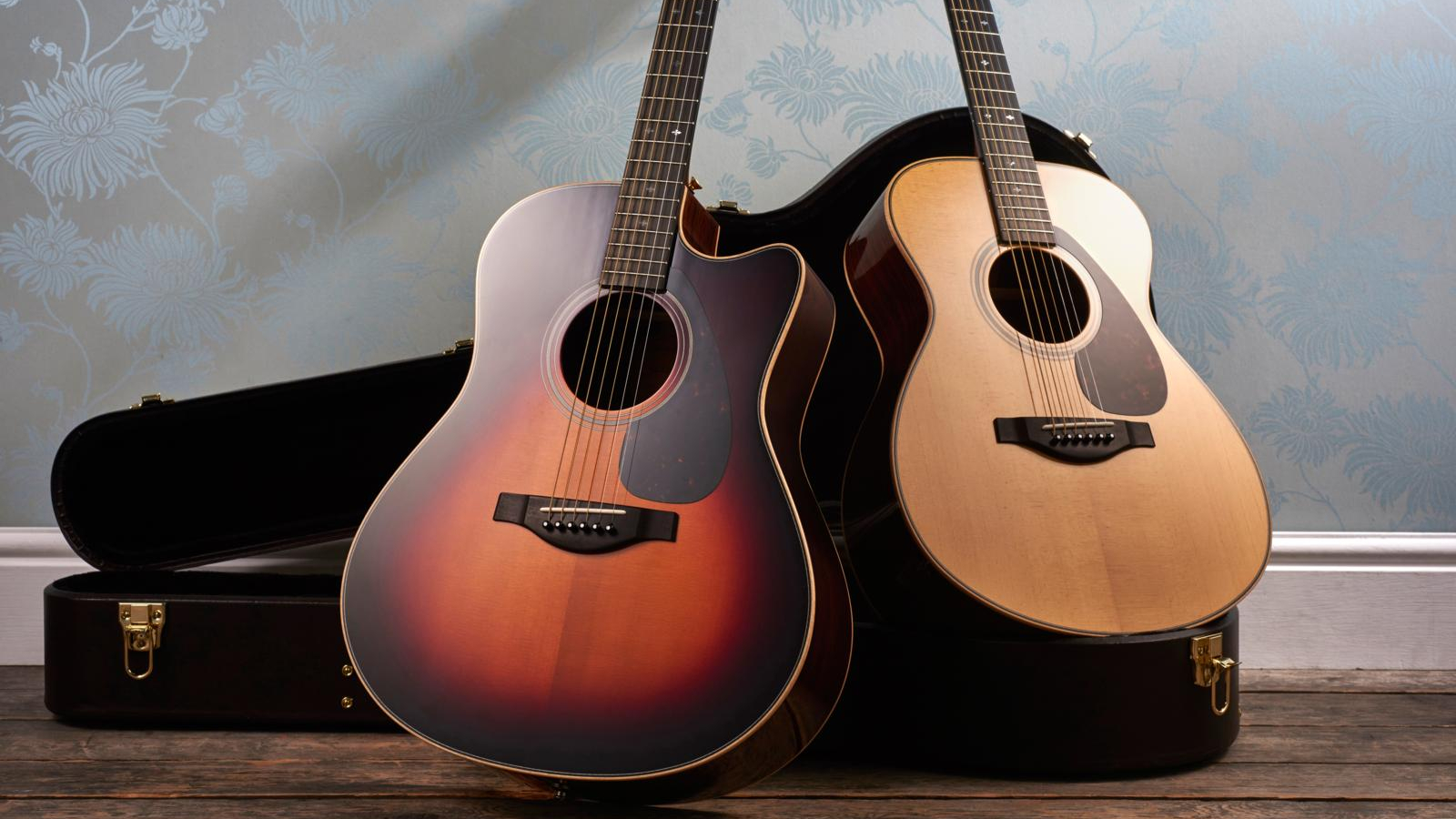
Struggling to tell your dreadnought from parlor? Seeking clarification on the tonal differences between mahogany and rosewood? Or perhaps you just need to know which type of strings are best suited for your beloved steel-strung buddy. Well, you’ve come to the right place. Today, we’re going to answer some of the most frequently asked questions surrounding the acoustic guitar, with the hope of arming you with the knowledge you need to better understand this beautiful instrument.
So, no matter if you’re a complete beginner looking for a guiding hand to help navigate confusing flat-top terminology, or a seasoned pro simply wanting to brush up on some acoustic basics, this is the article for you.
If it’s more specific advice on which beginner instrument is right for you, then you’ll want to head over to our best beginner acoustic guitar buyer’s guide, where we break down what we believe to be the greatest models available right now and provide all the guidance you need.
When was acoustic guitar invented?
The acoustic guitar, as we know it today, can be traced back to around 1830 and is credited to CF Martin of Martin Guitars. Martin decided to help banjo players more easily switch between instruments by ditching the traditional gut strings in favor of the steel strings they were used to – and so the modern acoustic guitar was born.
Martin would then refine his new creation and later develop the “X” bracing pattern to help strengthen the top and account for the extra tension now applied from the force of the new strings. This is a design that is still very much in use today.
What are the differences between acoustic guitar body shapes?
Acoustic guitars come in a variety of shapes and sizes, with each bringing its own unique voice to the table. To make things a little easier, we’ll go through the most common styles, from the largest through to the smallest, and explain the sonic attributes of each.
Let’s start with jumbo. Now, while there are bigger models available, they aren’t as commonplace, so jumbo feels like a natural starting point. Characterized by their considerable body, rounded shoulders, and extensive depth, jumbo models tend to produce a thunderous low-end and significant volume. Of course, their larger size can make them difficult to navigate for smaller players, but it can’t be denied that if you are seeking the biggest tone possible, you’ll need one of the biggest guitars to do it. Popular jumbo models include the absolutely stunning Gibson SJ-200 and the show-stopping Guild F-55.
Get The Pick Newsletter
All the latest guitar news, interviews, lessons, reviews, deals and more, direct to your inbox!
Moving on, we get to the dreadnought, arguably the most popular and universally loved acoustic guitar shape. While this style does come in considerably smaller than the jumbo, it’s still not a small guitar. Typically featuring square shoulders and a slimmer waist compared to its larger brethren, the dreadnought delivers the most balanced and versatile tone. If you need a guitar that can handle just about any genre, the dreadnought is a model for you. Iconic dreadnought models include the legendary Martin D-28 and the Gibson J-45 workhorse.
Next up are concert or grand auditorium-sized acoustic guitars. As you’ve probably guessed, these models are smaller again when compared to the previous models. With a tighter waist and slight bouts, this style of acoustic lends itself to fingerpicking and medium strumming, thanks in part to the enhanced clarity, tighter bass response, and more reserved volume. Examples of concert and grand auditorium models include the Marin OM-28 and Taylor 514.
Lastly, we have the parlor guitar. Famed for their petite body, sloped shoulders and narrow lower bouts, parlor guitars produce a bright and articulate tone that is ideal for delta blues licks and delicate fingerpicking.
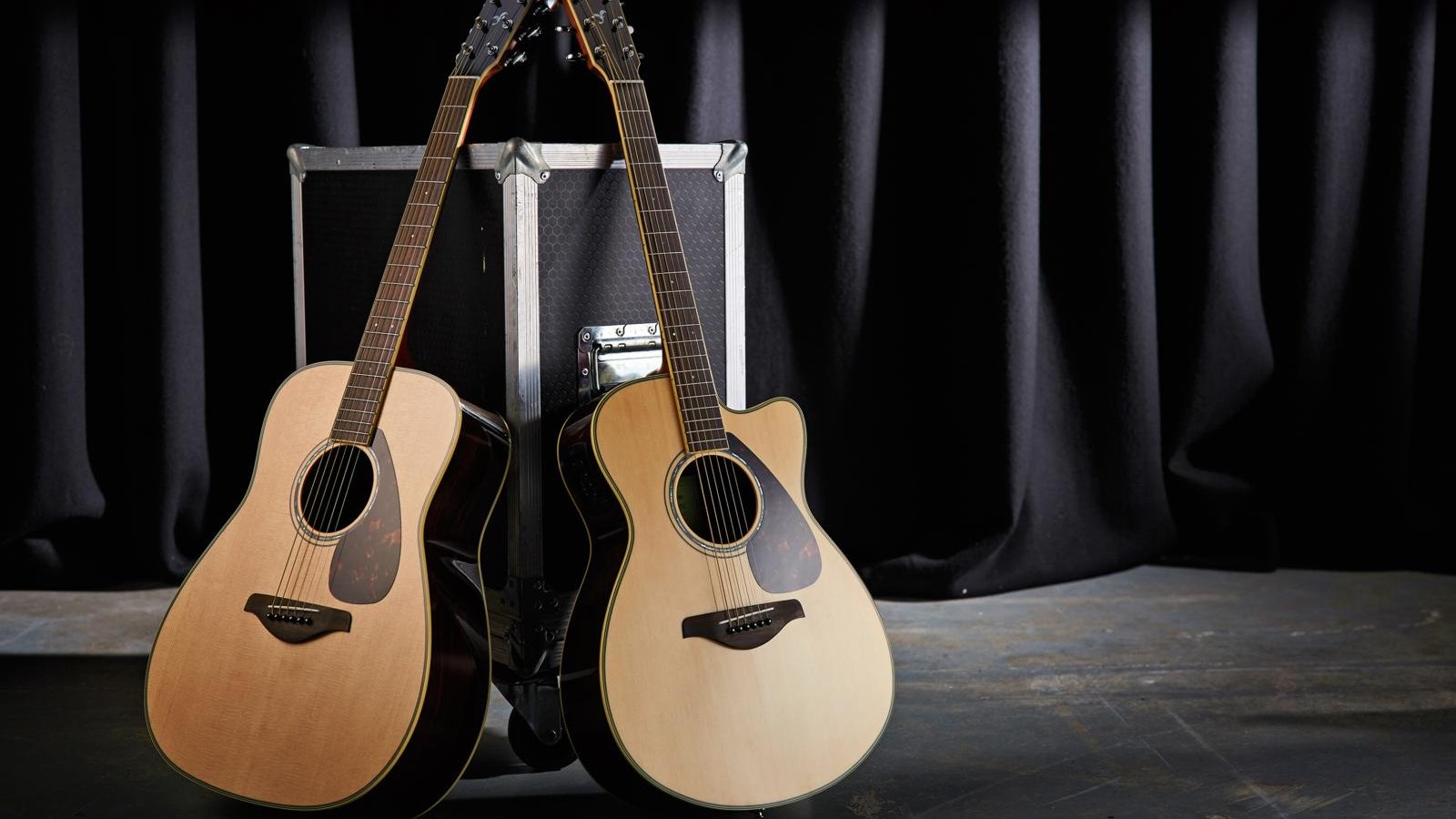
Which acoustic shape is right for me?
When it comes to the right acoustic guitar for you, there aren’t any wrong answers – if it feels right, then it is right. That said, there are a few things you should consider. Smaller players will obviously find smaller acoustic guitars easier to play, but there’s more to selecting a guitar than just comfort.
The tone you are seeking and your playing style will also inform which style you end up purchasing. Singer-songwriter? Well, a dreadnought is the obvious choice. Big fan of fingerpicking? Well, you’ll want to check out a concert or grand auditorium.
Does the wood used affect the tone of an acoustic guitar?
In short, yes. The tonewoods used in an acoustic guitar’s construction plays a massive role in the overall sound of the instrument. While many acoustic guitars opt for a spruce top, the back and sides of the instrument can vary wildly. You’ll find models made from rosewood, maple, cedar, walnut, sapele and the list goes on.
The most common configuration is a spruce top and rosewood back and sides. This typically results in a sonically even guitar that sounds natural and inviting. Guitars that choose to use maple, on the other hand, will have a brighter and more detailed top-end when compared to guitars that use the mellower rosewood.
Mahogany is often chosen for its warmer and darker properties, and ideal for those who are after an understated tone that is relaxed and mellow.
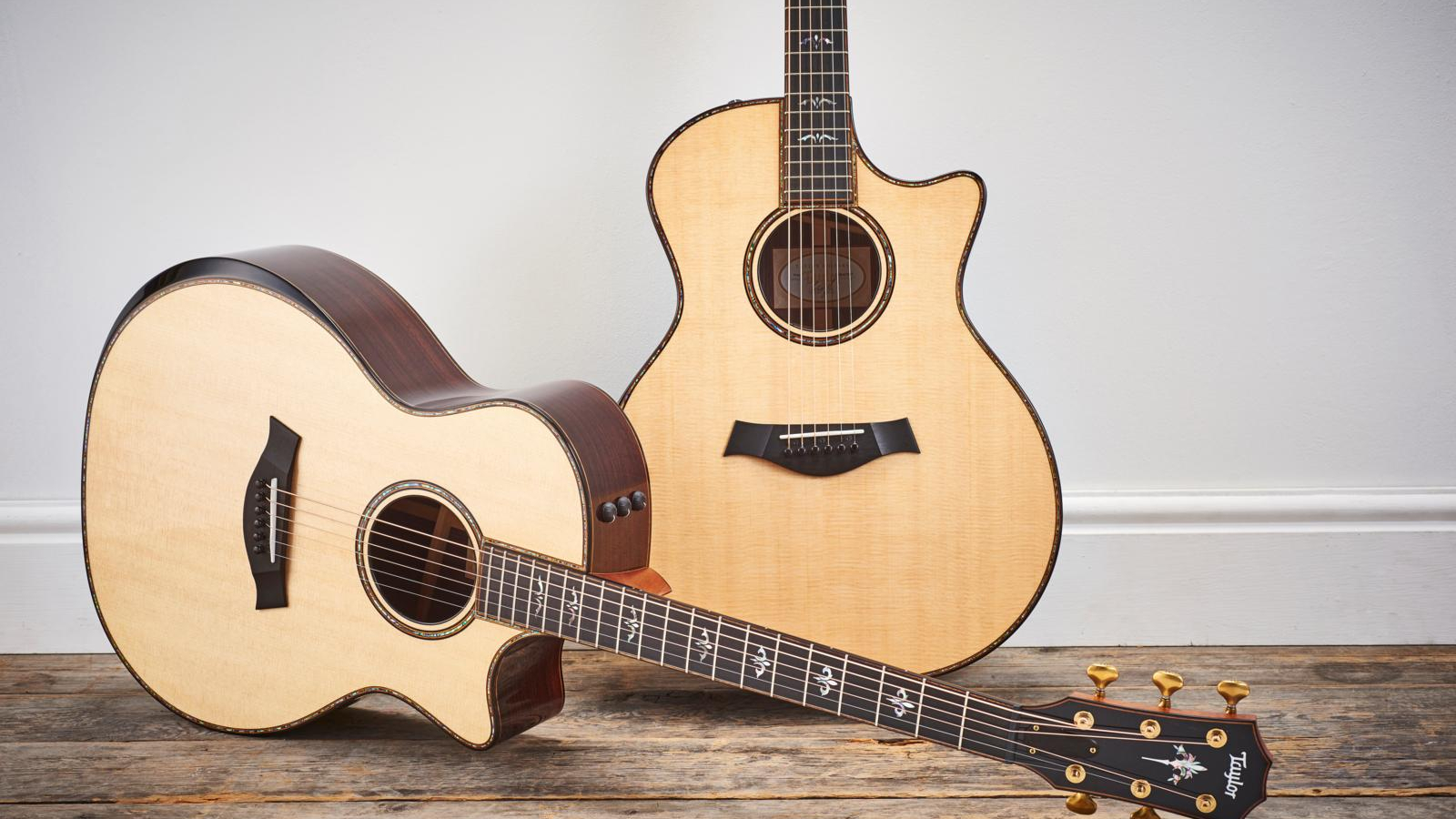
What is the meaning of neck profile?
The term “profile” refers to the shape of the neck and is commonly identified by a letter that signifies the general shape you should expect from the back of the neck.
C, D, U, and V are the most traditional neck profiles, with each having a very distinct feel in your hand. It’s also worth noting that neck profiles do vary wildly between companies – what Fender calls a “modern C” is very different from that of Gibson, Martin, or Taylor.
Want to take a deep dive into neck profiles? Check out our neck profile explainer, where we go into great detail about each shape.
What is an electro-acoustic guitar?
An electro-acoustic or electric-acoustic is an acoustic guitar that is fitted with a pickup. This means the guitar can be amplified and is ideal for performing live on stage or even recording.
Many acoustic guitars come with a discrete under-saddle transducer, while others come fitted with a soundhole pickup that’s attached to the guitar’s top. Ultimately, the style of pickup doesn’t really matter – if it’s an acoustic guitar you can plug into an amplifier; it’s an electric acoustic guitar.
Fancy adding one to your collection? Well, find out what Guitar World believes to be the best acoustic-electric guitars.
Do I need an amp for my acoustic guitar?
No. The beauty of an acoustic guitar is that it generates its own amplification through the movement of the top. Very basically, the sound is produced when the strings vibrate and transfer energy to the soundboard through the bridge, which is then amplified by the guitar body and projected through the soundhole.
Even electric-acoustic guitars don't require an amplifier to be heard, with the pickup system and amp only being used when the guitar's natural volume isn't loud enough for certain situations, such as live concerts.
How are acoustic guitars made?
Most manufacturers have slightly different approaches to making an acoustic guitar, but most of the basic principles are the same. An acoustic guitar is made up of a relatively small number of parts, from the top or soundboard, the back and sides, the internal bracing, the neck, the fingerboard, the bridge, the saddle, and lastly, the headstock, which houses the machine heads.
As for how acoustic guitars get their curved shape, the wood used for the instrument's sides is soaked in water and gently bent into shape. The wood is then left to dry while being clamped within a frame. Once fully dried, the wood will take on the characteristic curve the acoustic is known for.
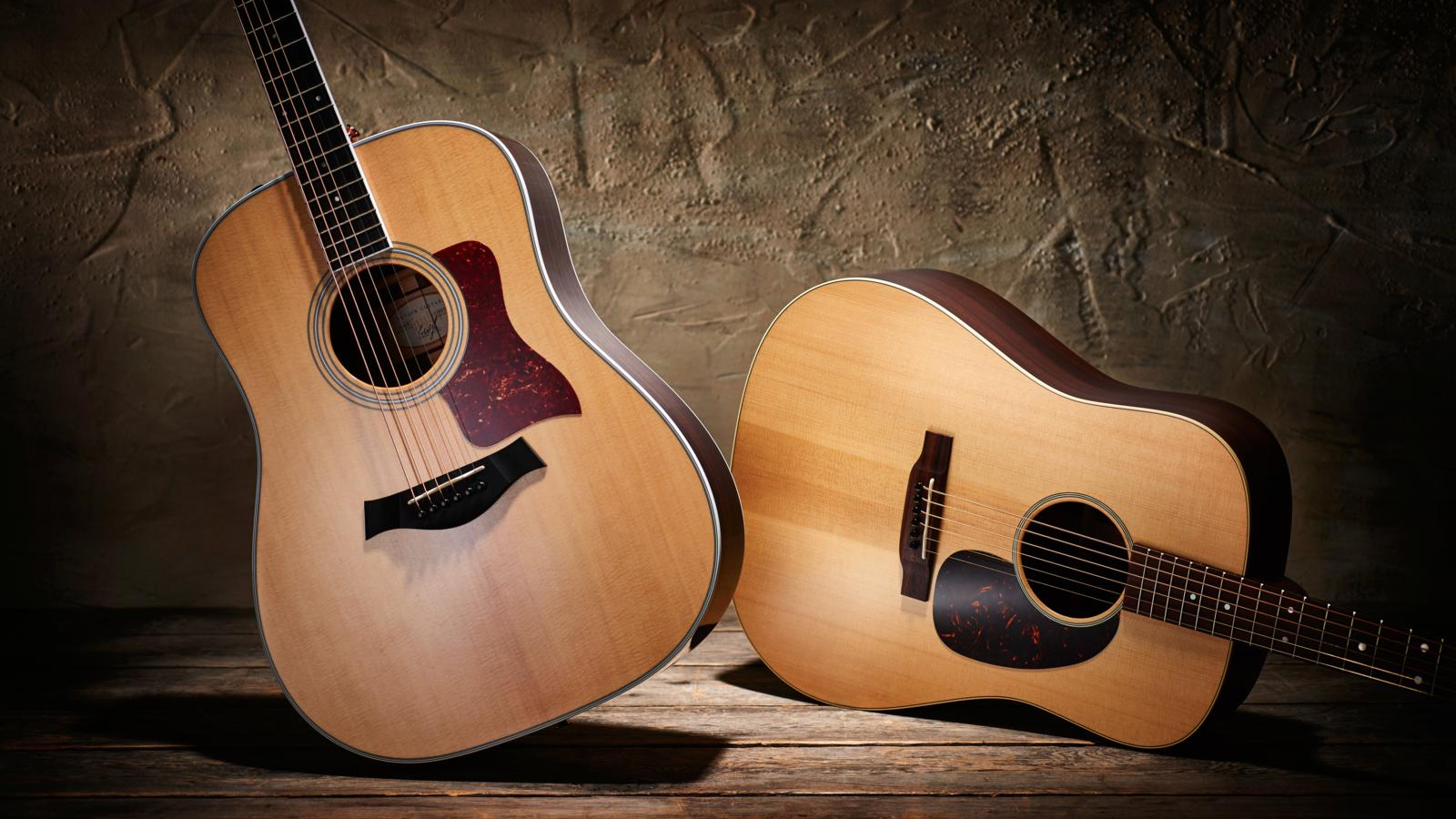
What are the most popular acoustic guitar brands?
As you can imagine, there’s a plethora of acoustic guitar brands out there. From legacy brands that helped define what the instrument should be, like Martin, Gibson, and Guild, to modern names that thrive on innovation, such as Taylor, Takamine, and Godin, you’re not short on options.
Now, each of these brands delivers its own unique sound, playability, and style, and which is right for you is a matter of taste and personal preference.
To make choosing the perfect brand that aligns with your own preferences and sensibilities a little easier, we’ve selected what we believe to be the best guitar brands available right now.
What gauge of acoustic strings is best?
When we talk about the gauge, we basically mean the thickness or diameter of the acoustic strings. Guitar strings are measured in 1/1000th of an inch, with packs typically listing the thinnest string. For example, a pack of 12 gauge strings refers to the E being 0.012".
Now, when it comes to choosing the correct gauge for your guitar or playing style, it really comes down to personal feel, sound, and what the manufacturer of your guitar recommends.
The majority of acoustic guitars come with 12 gauge strings, but brands such as Martin like to ship a lot of their models with 13s. So, if you are in doubt, we'd recommend starting with 12s and seeing how you get on. If you feel the tension is too great, you can always drop to 11s, or likewise, if 12s are too light for your playing style, you can go up a gauge to 13s.
Is the acoustic guitar harder to learn than electric?
Okay, so this one is a little tricky to answer. In theory, learning the acoustic guitar is no different from learning the electric. The chords are the same, you need to put just as much effort into memorizing the notes, and strumming is identical. However, in practice, some newbie players report that learning on an electric guitar is easier.
Electric guitars often have thinner necks, use a lighter gauge of strings, and are usually physically smaller to hold. So if you find the acoustic guitar a little too cumbersome or difficult to get a note out of, then maybe you should think about moving over to the electric.
That said, it's worth noting that an electric guitar won't sound like an acoustic. If you are seeking to recreate the song of your favorite singer-songwriter, then you'll need to use the right guitar for the job and that's an acoustic.
For more information on the differences between acoustic and electric guitar, head over to our explainer, where we break down the pros and cons of each style.
What is the difference between a steel-strung acoustic guitar and a classical guitar?
While both are technically acoustic guitars, classical and steel-strung acoustic guitars are very different instruments.
The first and most obvious difference between the two is the style of strings they use. Classical guitars opt for softer nylon strings, while acoustic guitars use steel strings. Nylon strings have considerably less tension than that of their metal counterpart and produce a mellower, smoother tone that is ideal for flamenco styles.
That said, the differences don’t stop at the strings. The entire construction of the instrument is different. Acoustic guitars tend to have a larger silhouette, while classical guitars are typically smaller and lighter. Classical guitars also feature a wider fingerboard, which helps aid players playing in the traditional position but can feel completely foreign to those switching from the likes of a dreadnought.
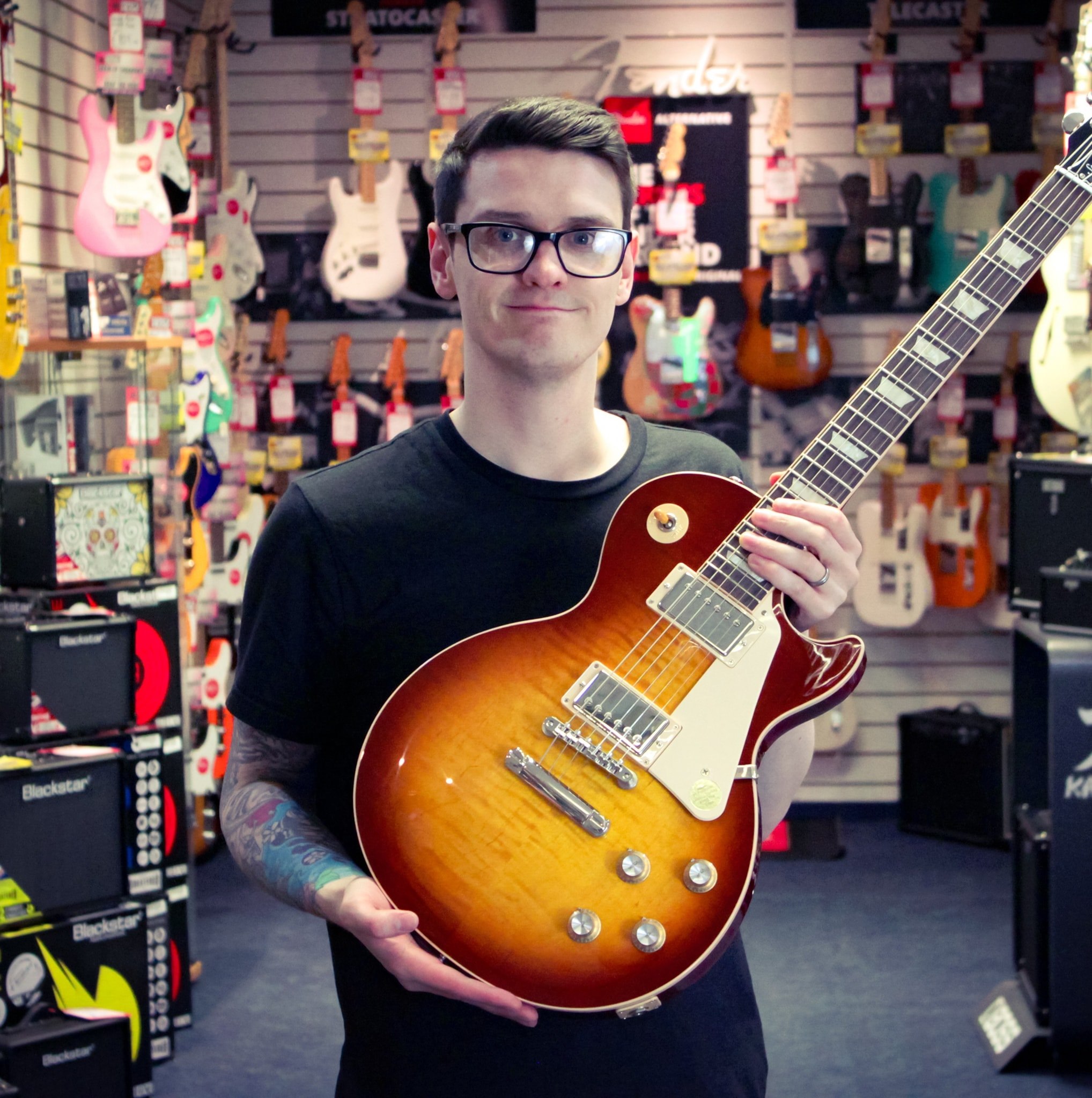
Daryl is a Senior Deals Writer at Guitar World, where he creates and maintains our 200+ buyer's guides, finds the best deals on guitar products, and tests the latest gear. His reviews have been featured in prominent publications like Total Guitar, Future Music magazine, and MusicRadar.com.
During his career, he has been lucky enough to talk to many of his musical heroes, having interviewed Slash and members of Sum 41, Foo Fighters, The Offspring, Feeder, Thrice, and more. In a past life, Daryl worked in music retail. For a little under a decade, he advised everyone from absolute beginners to seasoned pros on the right gear for their needs.
Daryl is also a fully qualified sound engineer, holding a first-class Bachelor's degree in Creative Sound Production from the University of Abertay.
“Among the most sought-after of all rhythm guitars… a power and projection unsurpassed by any other archtop”: Stromberg has made a long-awaited comeback, and we got our hands on its new Master 400 – a holy grail archtop with a price to match
The heaviest acoustic guitar ever made? Two budding builders craft an acoustic entirely from concrete because they “thought the idea was really funny”








![[from left] George Harrison with his Gretsch Country Gentleman, Norman Harris of Norman's Rare Guitars holds a gold-top Les Paul, John Fogerty with his legendary 1969 Rickenbacker](https://cdn.mos.cms.futurecdn.net/TuH3nuhn9etqjdn5sy4ntW.jpg)
